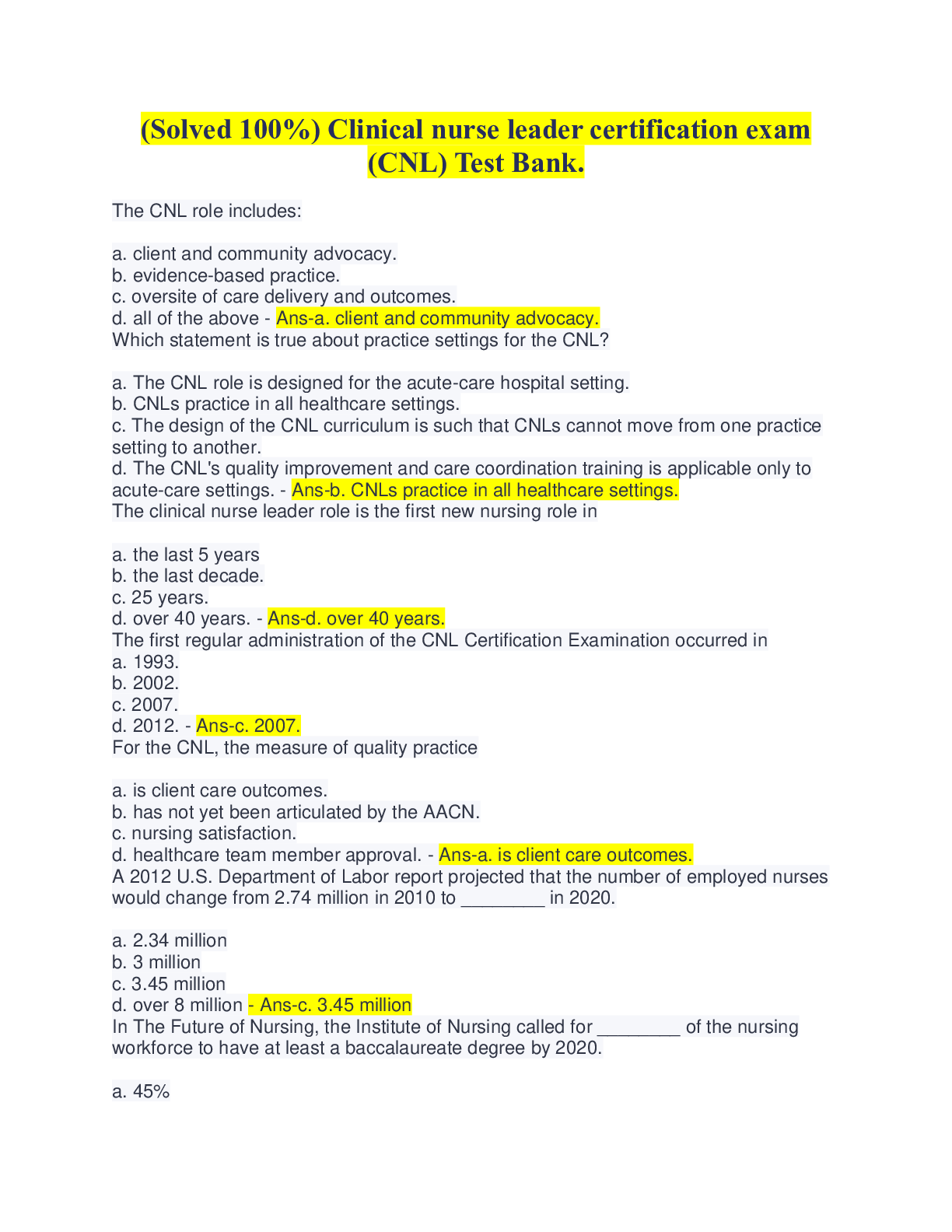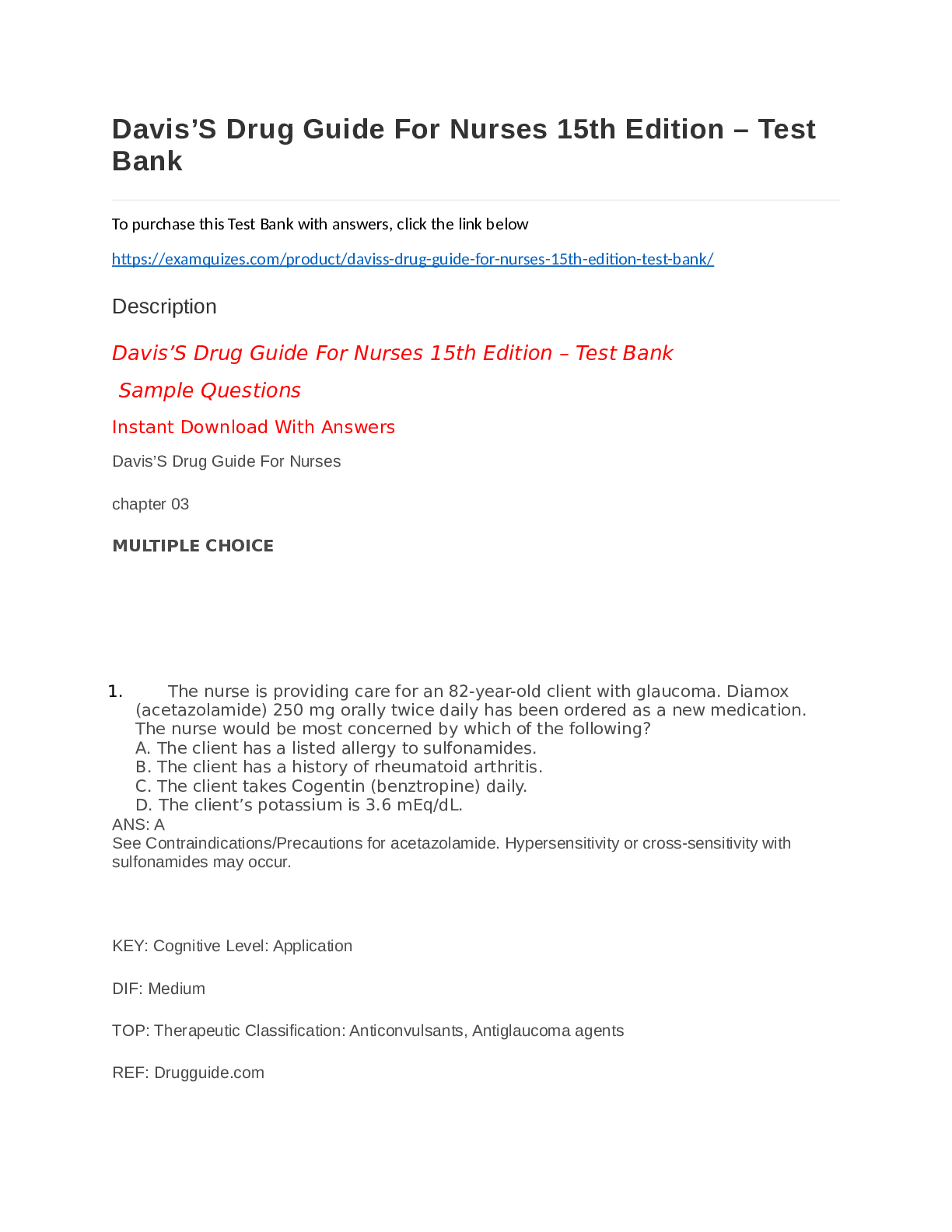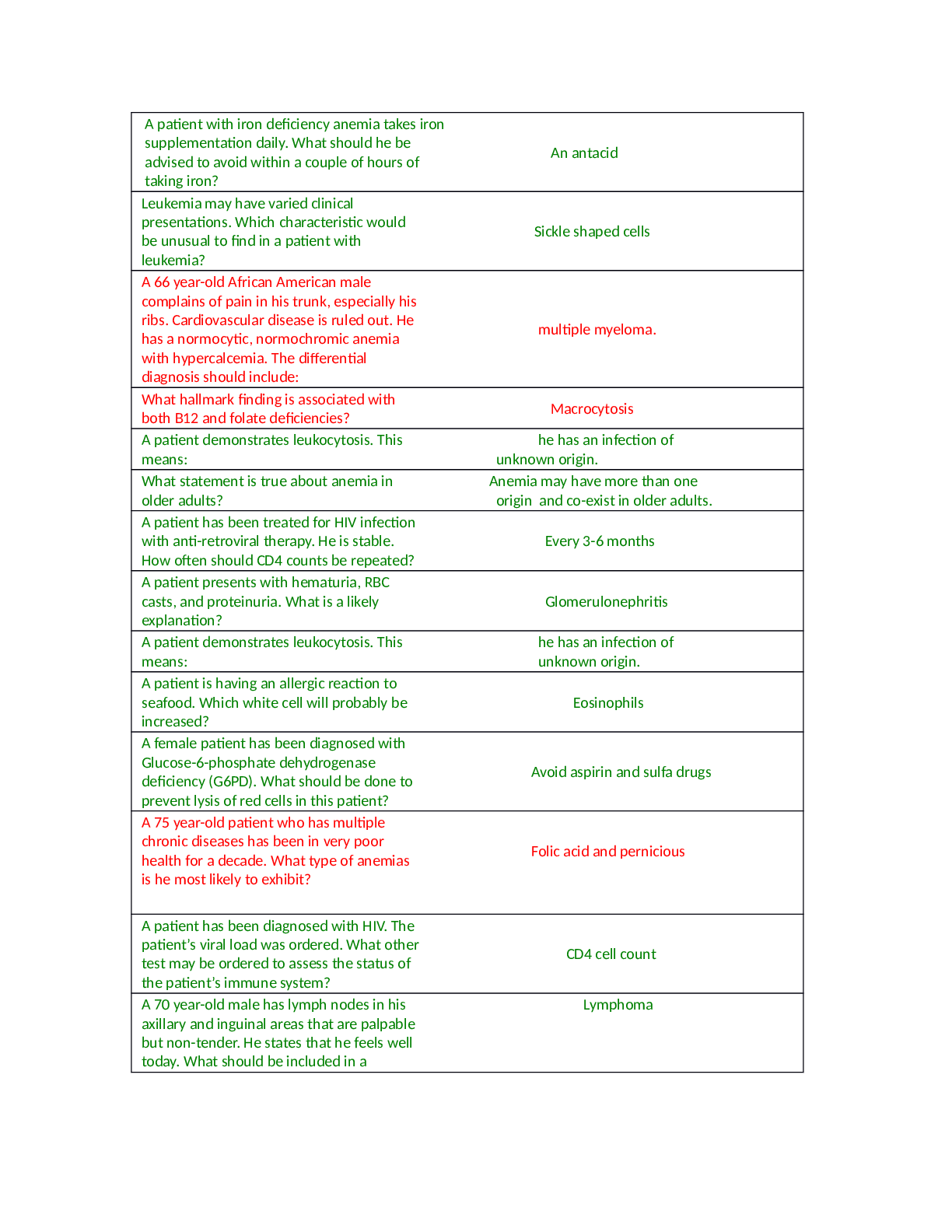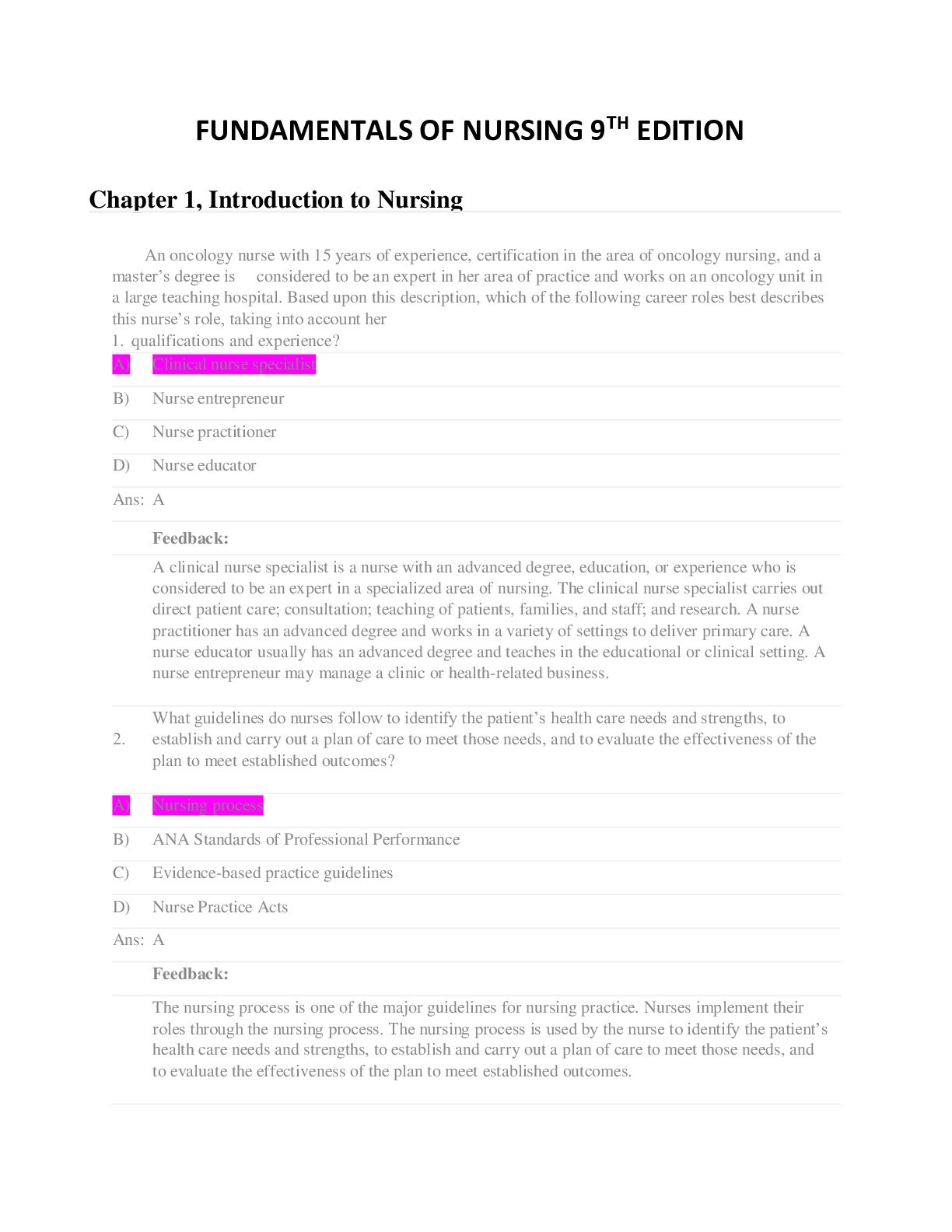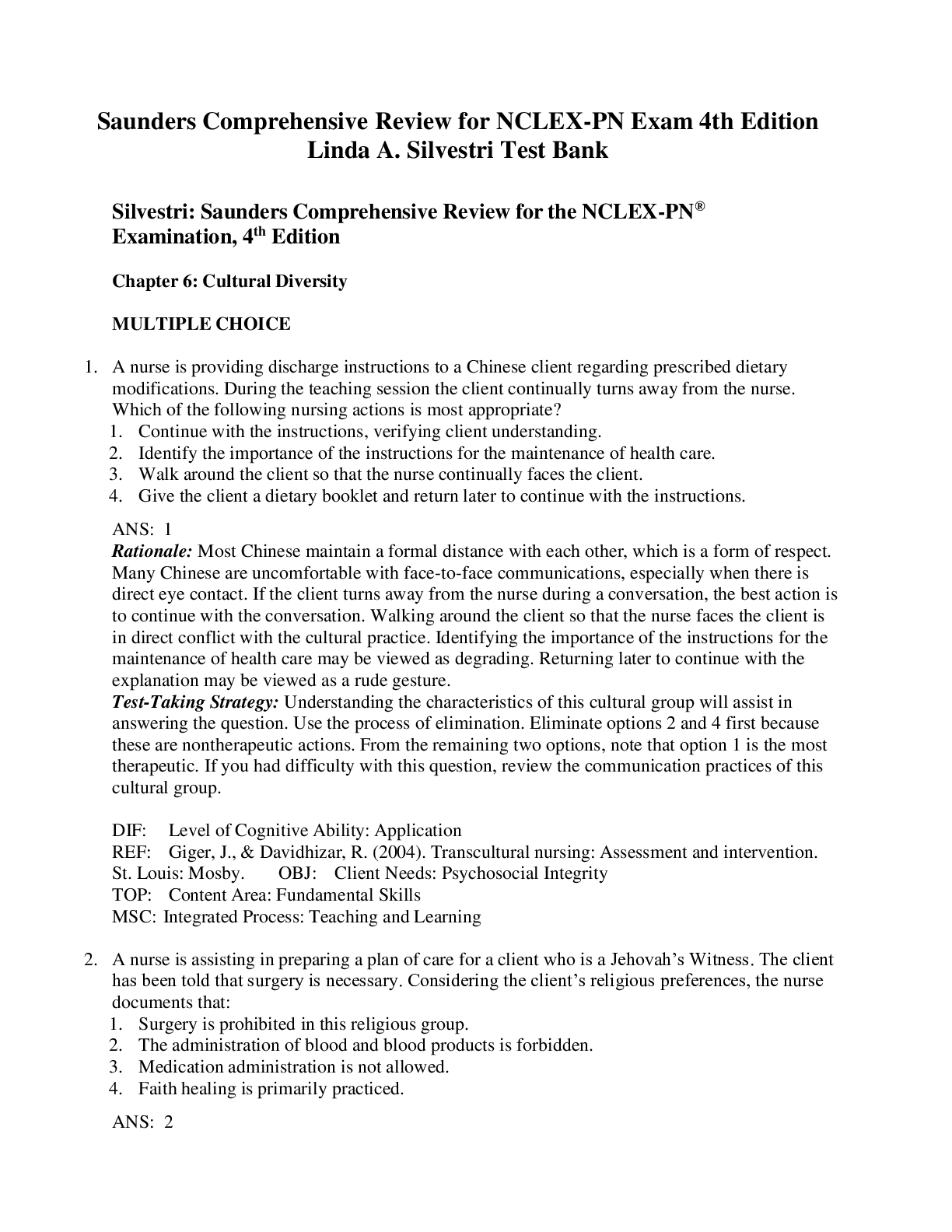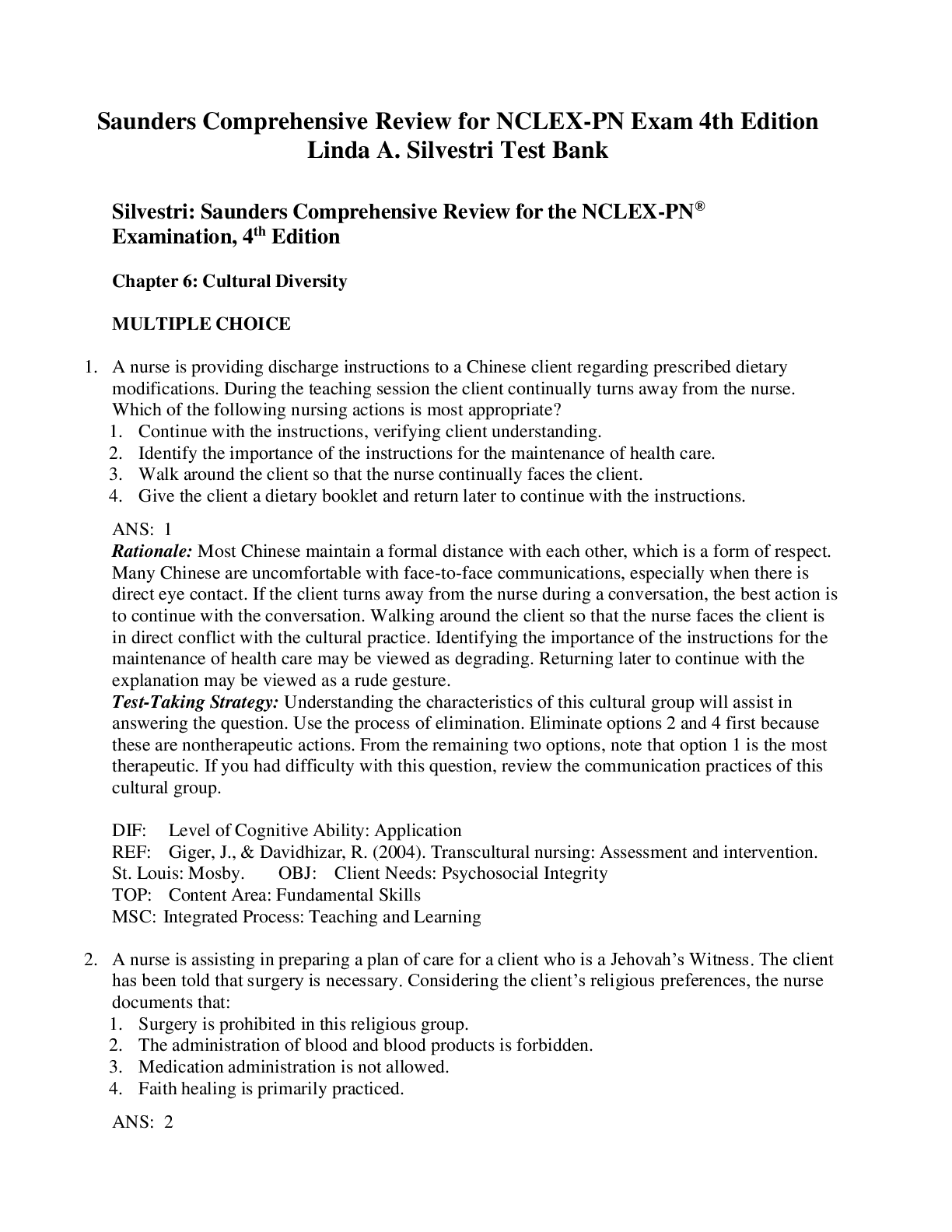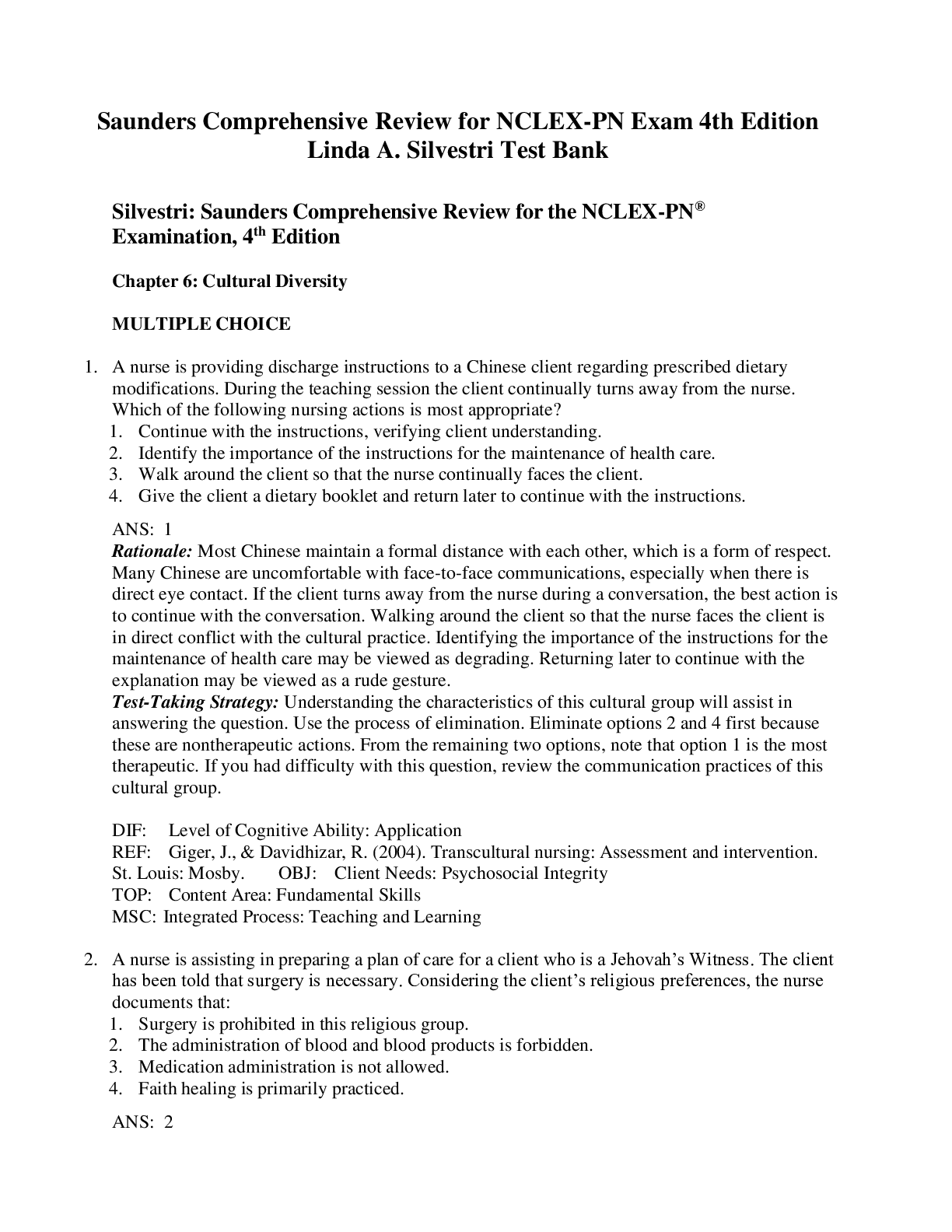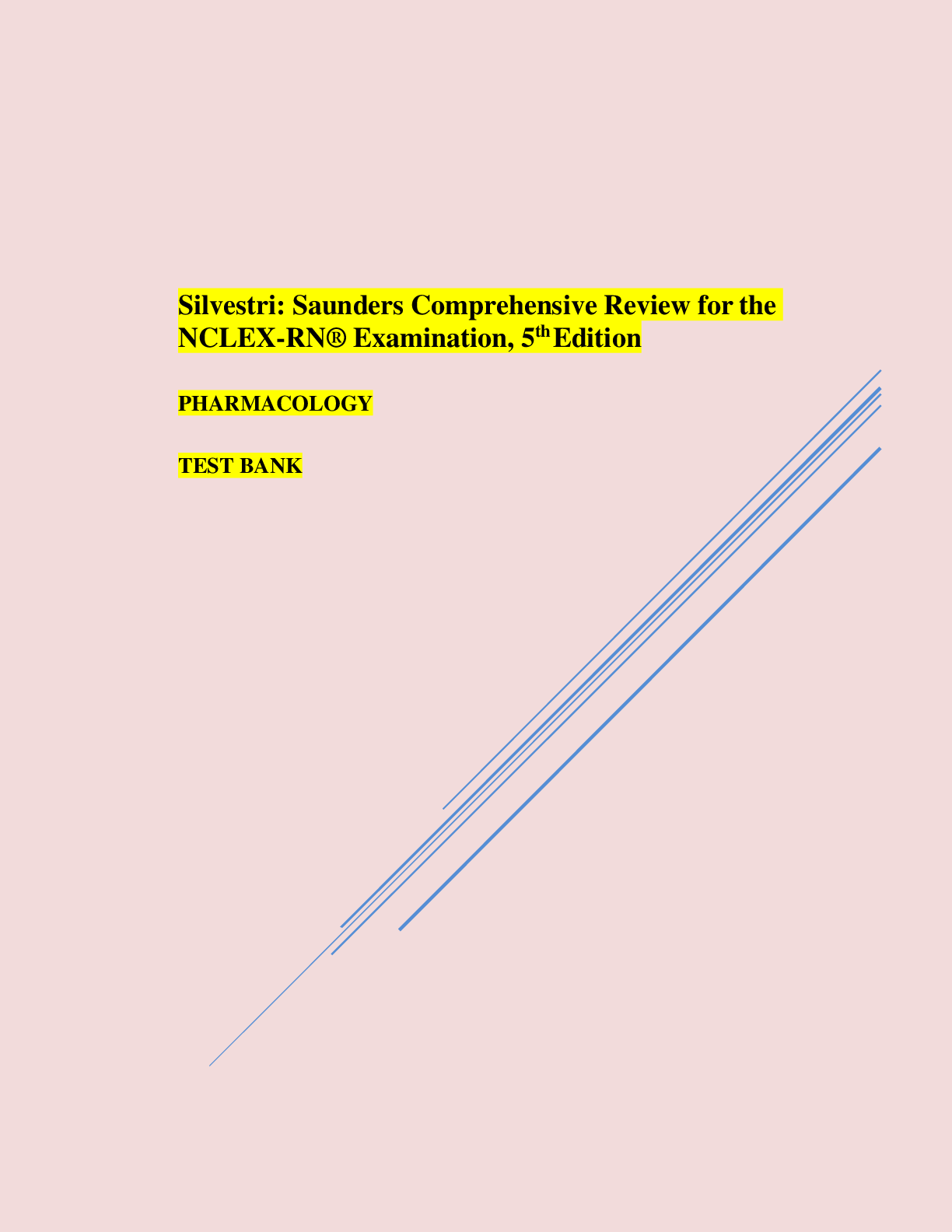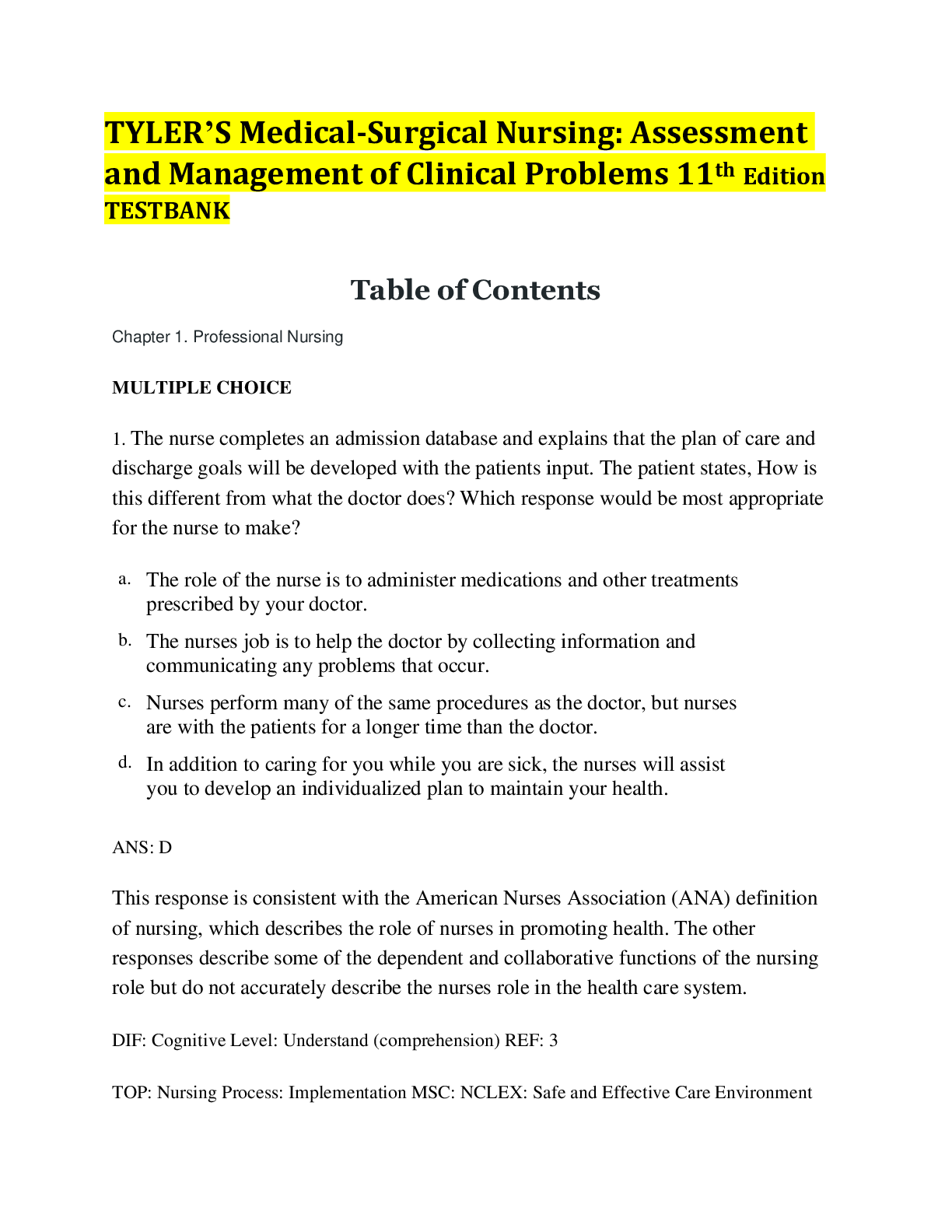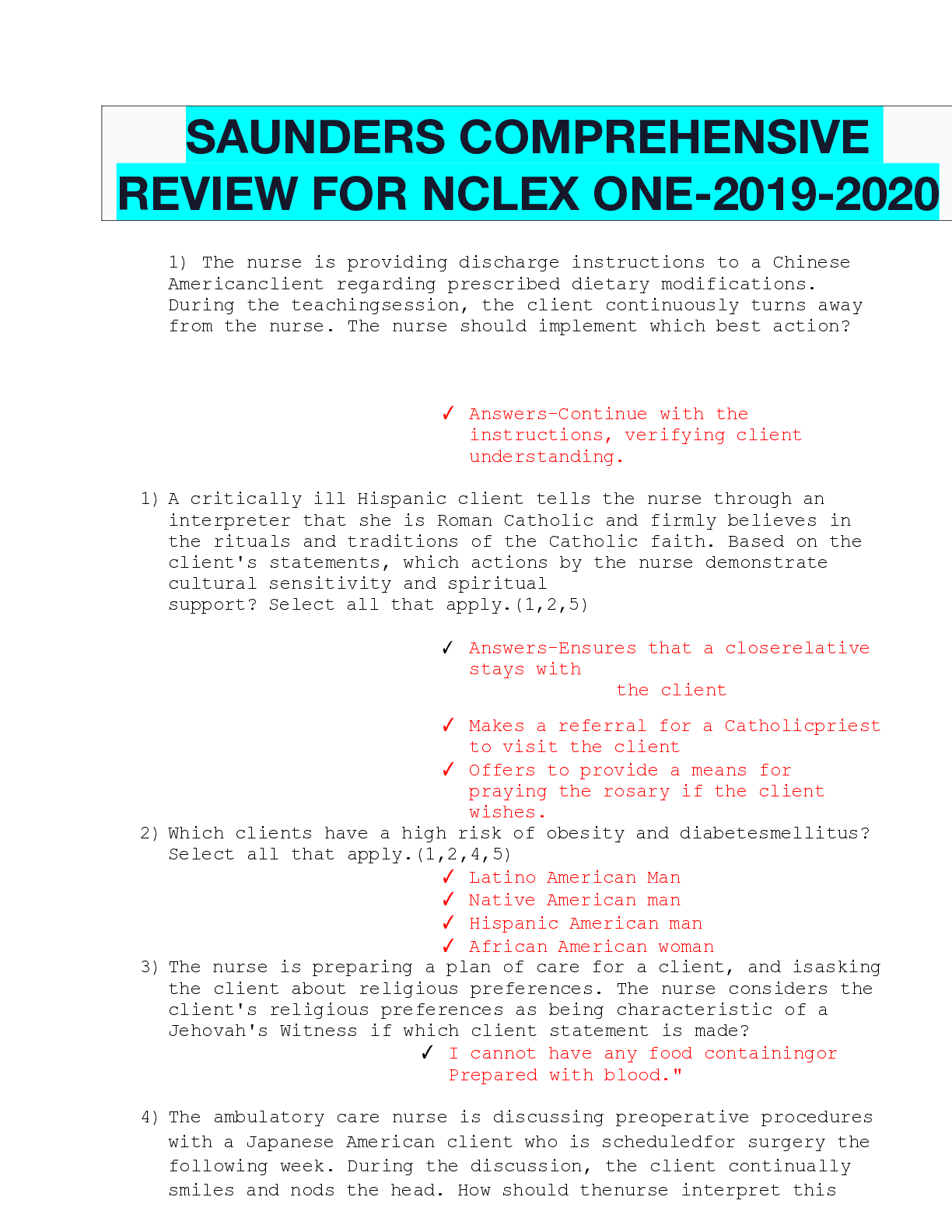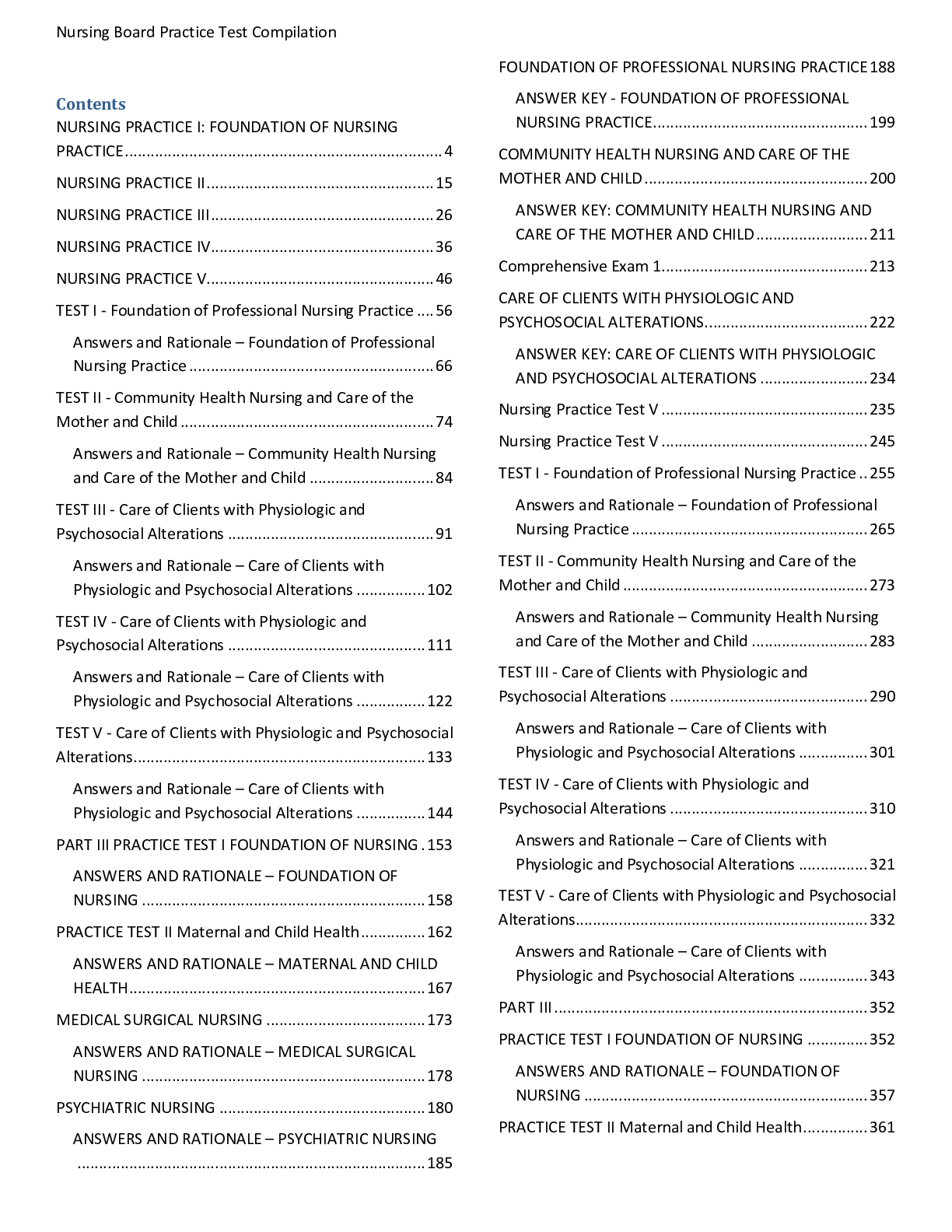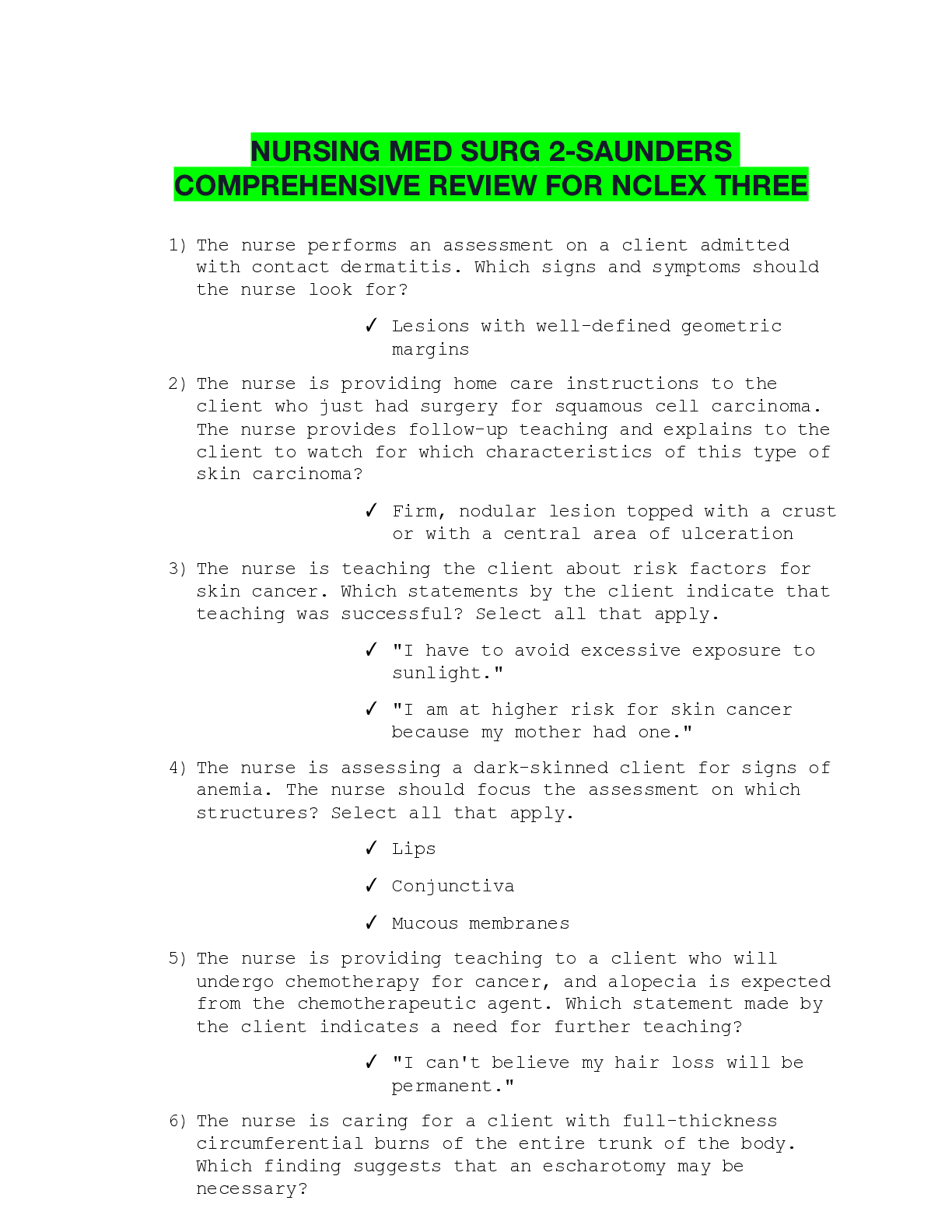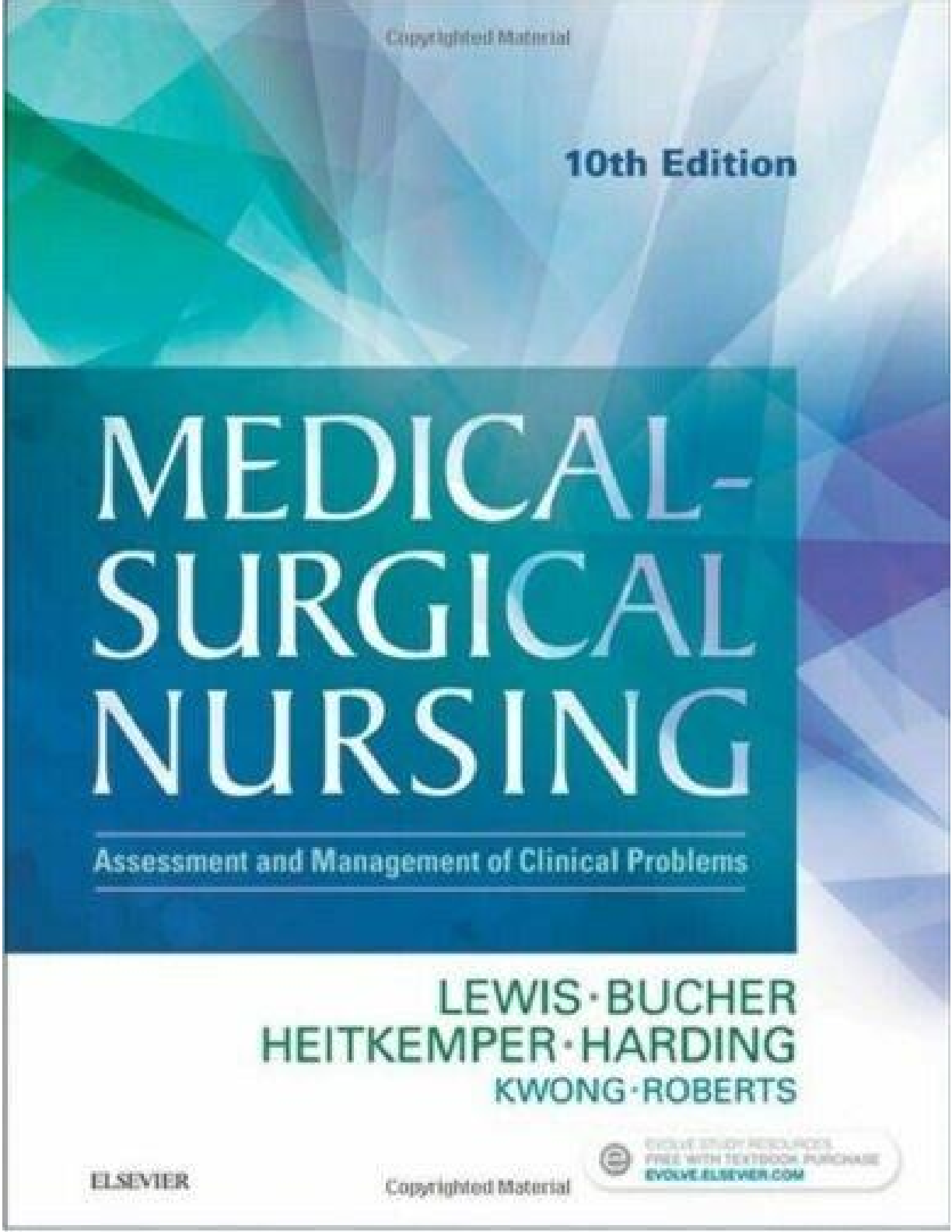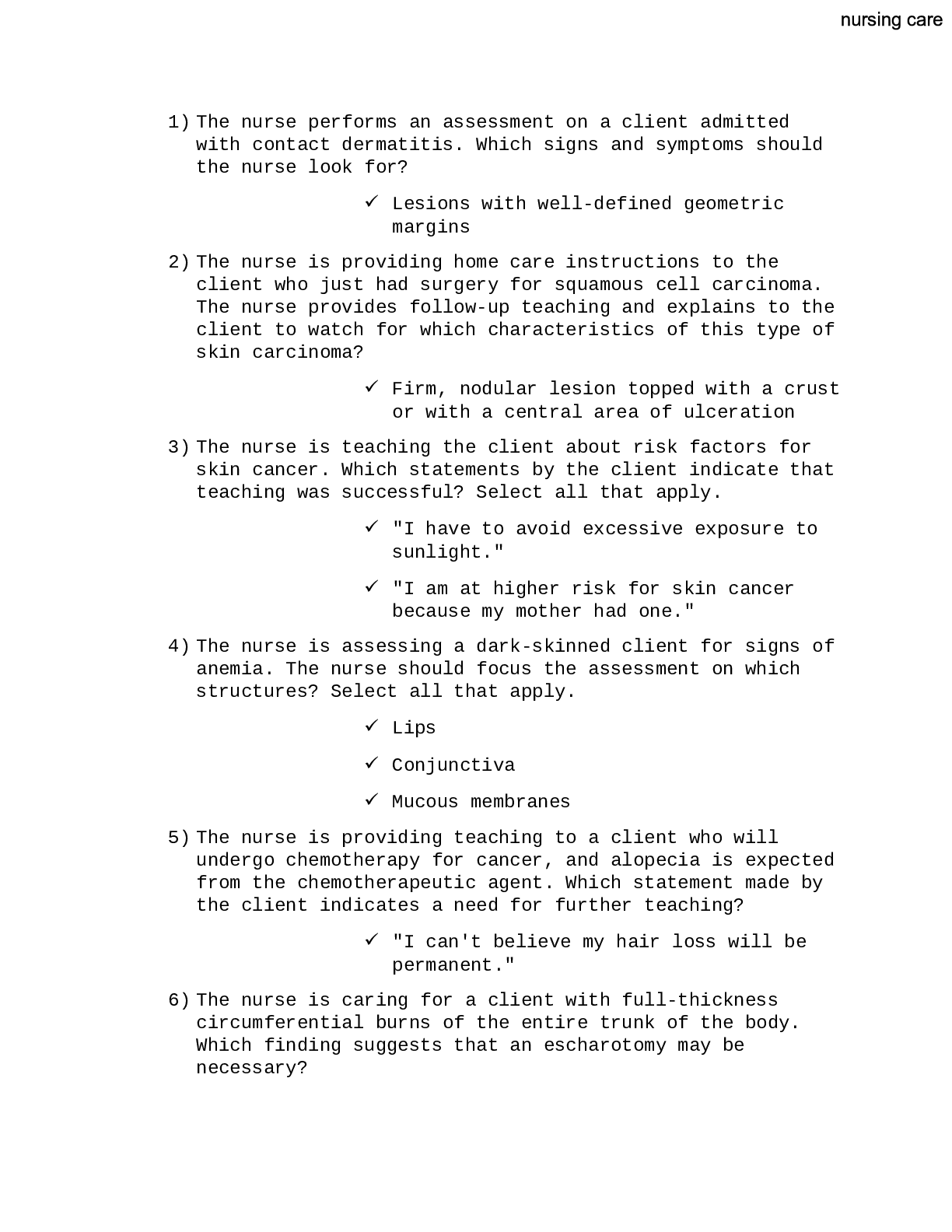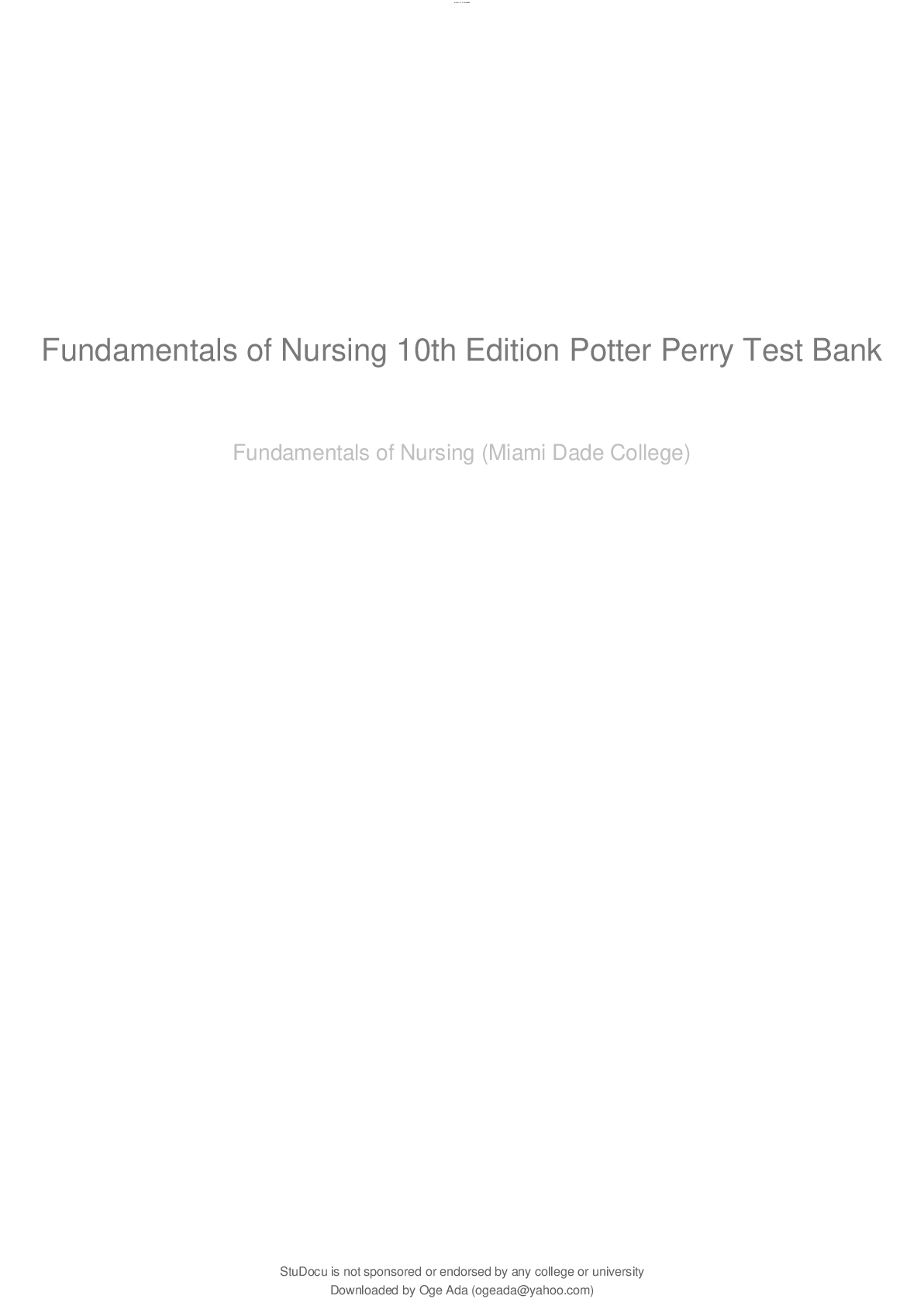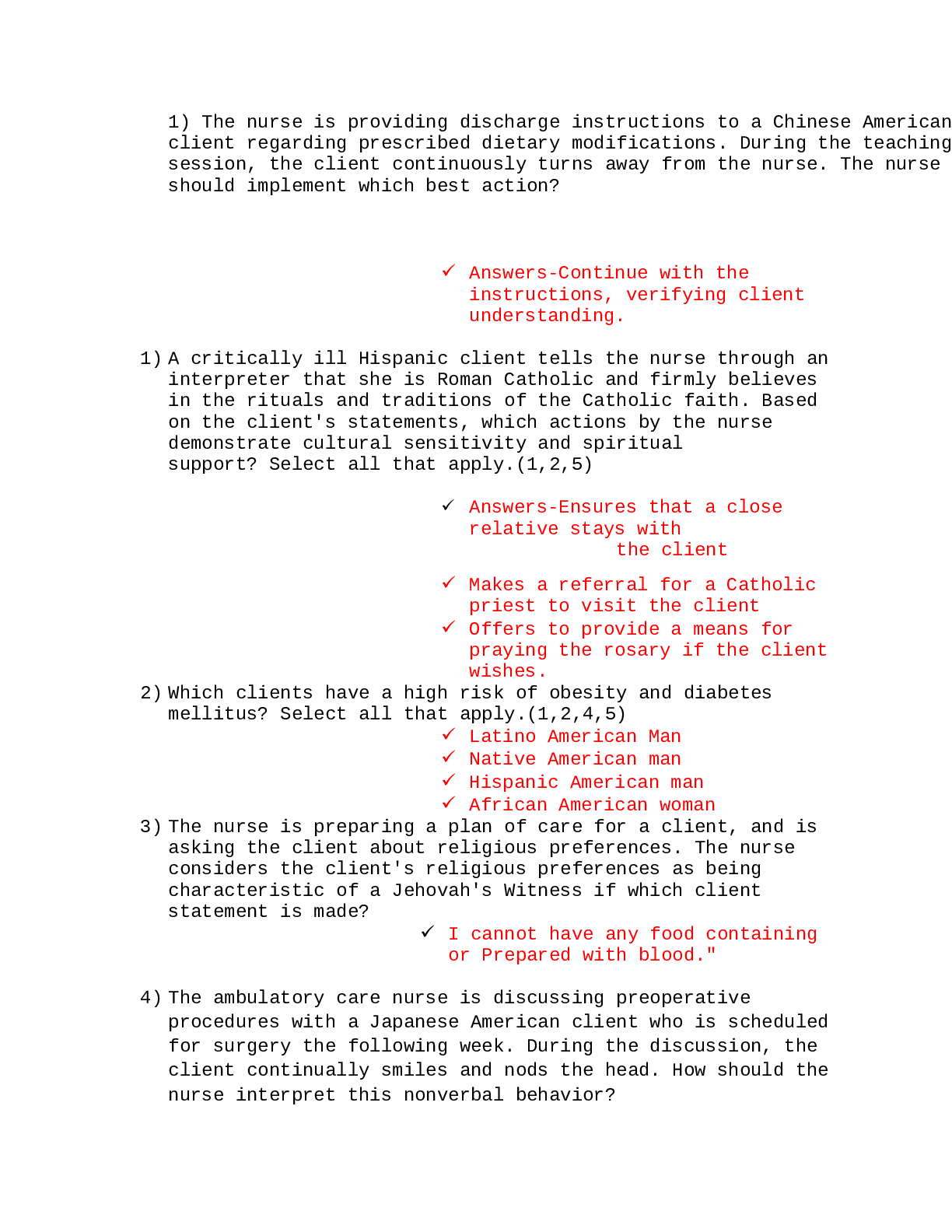*NURSING > TEST BANK > SAUNDERS COMPREHENSIVE REVIEW FOR NCLEX FOUR (Latest & revised Test bank) 1141 questions & complete (All)
SAUNDERS COMPREHENSIVE REVIEW FOR NCLEX FOUR (Latest & revised Test bank) 1141 questions & complete ans (LATEST): (ANSWERS VERIFIED 100% CORRECT)
Document Content and Description Below
1) The nurse would anticipate that the health care provider (HCP) would add which medication to the regimen of the client receiving isoniazid? Pyridoxine 2) A postpartum nurse is caring for a ... client with an epidural catheter in place for opioid analgesic administration following cesarean birth. The client develops respiratory depression and requires naloxone administration. Which finding should the nurse anticipate as a result of the naloxone administration? Increase in pain level 3) The nurse should monitor the client receiving the first dose of albuterol for which side or adverse effect of this medication? Tachycardia 4) The client has a prescription to receive pirbuterol 2 puffs and beclomethasone dipropionate 2 puffs by metered-dose inhaler. The nurse plans to give these medications in which way to ensure effectiveness? Administering the pirbuterol before the beclomethasone 5) A client with chronic obstructive pulmonary disease (COPD) is being changed from an oral glucocorticoid to triamcinolone by inhalation. The client asks why this change is necessary. Which statement by the nurse to the client is accurate? "Inhaled glucocorticoids are preferred because of decreased adverse effects." 6) A client taking theophylline has a serum theophylline level of 15 mcg/mL (60 mcmol/L). How does the nurse interpret this laboratory value? In the middle of the therapeutic range 7) A client is taking cetirizine. The nurse should inform the client of which side effect of this medication? Drowsiness 8) A client is scheduled to receive acetylcysteine 20% solution diluted in 0.9% normal saline by nebulizer. Which outcome would the nurse expect as a result of the administration of this medication? Thinning of respiratory secretions 9) The health care provider prescribes cromolyn for the client with asthma. The nurse identifies that the client correctly understands the purpose of this medication when the client states that the medication will produce which effect? 10) The nurse is teaching a client about the effects of diphenhydramine, an ingredient in the cough suppressant prescribed for the client. The nurse should plan to tell the client to take which measure while taking this medication? Avoid activities requiring mental alertness. 11) The health care provider (HCP) has prescribed codeine sulfate for a client with a nonproductive cough to suppress the cough reflex. The nurse should teach the client to monitor for which side effect of the medication? Constipation 12) A client has begun therapy with a xanthine bronchodilator. The nurse determines that the client understands dietary alterations if the client states to limit which items while taking this medication? Select all that apply. Coffee Chocolate 13) Which supplies should the nurse obtain for the administration of ribavirin to a hospitalized child with respiratory syncytial virus (RSV)? A mask and pair of goggles 14) The nurse is documenting information in a client's chart when the electrocardiogram telemetry alarm sounds, and the nurse notes that the client is in ventricular tachycardia (VT). The nurse rushes to the client's bedside and should perform which assessment first? Check responsiveness 15) A client is brought into the emergency department in ventricular fibrillation (VF). The nurse prepares to defibrillate by placing defibrillation pads on which part of the chest? To the right of the sternum and to the left of the precordium 16) An adult client has been unsuccessfully defibrillated for ventricular fibrillation, and cardiopulmonary resuscitation (CPR) is resumed. The nurse confirms that CPR is being administered effectively by noting which action The carotid pulse is palpable with each compression. 17) The nurse is assigned the care of a client who experienced a myocardial infarction and is being monitored by cardiac telemetry. The nurse notes the sudden onset of this cardiac rhythm on the monitor. The nurse should immediately take which action? Refer to Figure. View Figure Initiate cardiopulmonary resuscitation (CPR). 18) To perform defibrillation, the defibrillator pads should be placed in which areas of the client's chest? To the right of the sternum just below the clavicle and to the left side, just below and to the left of the pectoral muscle 19) The nurse is caring for a client who is pulseless and experiencing this dysrhythmia. Which interventions should the nurse anticipate implementing in collaboration with the health care provider (HCP)? Select all that apply. Refer to Figure. View Figure Prepare to administer amiodarone. Prepare to administer epinephrine. Provide cardiopulmonary resuscitation (CPR). 20) The nurse is performing cardiopulmonary resuscitation (CPR) on a client who has had a cardiac arrest. An automatic external defibrillator (AED) is available to treat the client. Which activity will allow the nurse to assess the client's cardiac rhythm? Apply adhesive patch electrodes to the chest and move away from the client. 21) The nurse is teaching adult cardiopulmonary resuscitation (CPR) guidelines to a group of laypeople. The nurse observes the group correctly demonstrate 2-rescuer CPR when which ratio of compressions to ventilations is performed on the mannequin? 30:2 22) The nurse is teaching cardiopulmonary resuscitation (CPR) to a group of community members. The nurse tells the group that when chest compressions are performed on infants, the sternum should be depressed how far? About 1½ inches (4 cm) 23) The nursing instructor teaches a group of students about cardiopulmonary resuscitation. The instructor asks a student to identify the most appropriate location at which to assess the pulse of an infant younger than 1 year of age. Which response would indicate that the student understands the appropriate assessment procedure? Brachial artery 24) The nurse is conducting a basic life support (BLS) recertification class and is discussing chest compressions in a pregnant woman. The nurse should tell the class that which action should be taken in an advanced pregnancy client whose fundal height is at or above the umbilicus? Maintain manual left uterine displacement during compressions. 25) The nurse is initiating 1-rescuer cardiopulmonary resuscitation on an adult client. The nurse should place the hands in which position to begin chest compressions? On the lower half of the sternum 26) The nurse walking in a downtown business area witnesses a worker fall from a ladder. The nurse rushes to the victim, who is unresponsive. A layperson is attempting to perform resuscitative measures. The nurse should intervene if which action by the layperson is noted? Use of the head tilt–chin lift 27) The nurse notes that a 14-year-old child is choking but is awake and alert at this time. The nurse rushes to perform the abdominal thrust maneuver. The child becomes unconscious. What procedure should the nurse perform next? Start chest compressions. 28) The nurse assigned to the pediatric unit finds an infant unresponsive and without respirations or a pulse. What is the nurse's next action after calling for help? Perform compressions at 100 to 120 times per minute. 29) The nurse is undergoing annual recertification in basic life support (BLS). The BLS instructor asks the nurse to identify the pulse point to use when determining pulselessness on an infant. Which response by the nurse identifies the most appropriate pulse point? Brachial 30) External public access defibrillator (PAD) interprets that the rhythm of a pulseless victim is ventricular fibrillation and advises defibrillation. Which action should the rescuer take next? Order people away from the client, charge the machine, and depress the discharge buttons. 31) Cardiopulmonary resuscitation (CPR) is immediately initiated on a client who is unconscious and has no pulse. A monitor is attached and it is determined that the rhythm is shockable, and defibrillation with 1 shock is delivered. Which action should the nurse plan to take next? Perform CPR for 5 cycles, and then defibrillate again if the rhythm is shockable. 32) The nurse has completed 5 cycles of compressions after beginning cardiopulmonary resuscitation (CPR) on a hospitalized adult client who experienced unmonitored cardiac arrest. What should the nurse plan to do next? Charge the defibrillator. 33) The nurse is teaching chest compressions for cardiopulmonary resuscitation (CPR) to a group of lay clients. Which behavior by one of the participants indicates a need for further teaching? Letting the right and left fingers rest on the chest 34) In order of priority, how should the nurse perform abdominal thrusts on an unconscious adult? Arrange the actions in the order that they should be performed. All options must be used. 1,2,3,4,5 35) One unit of packed red blood cells has been prescribed for a client with severe anemia. The client has received multiple transfusions in the past, and it is documented that the client has experienced urticaria-type reactions from the transfusions. The nurse anticipates that which medication will be prescribed before administration of the red blood cells to prevent this type of reaction? Diphenhydramine 36) The nurse has a prescription to administer whole blood to a client who does not currently have an intravenous (IV) line inserted. When obtaining supplies to start the blood infusion, the nurse should select an angiocatheter of at least which size? 19 gauge 37) A client has experienced high blood pressure and crackles in the lungs during previous blood transfusions. The client asks the nurse whether it is safe to receive another transfusion. The nurse explains that which medication most likely will be prescribed before the transfusion is begun? Furosemide 38) The nurse is told by a health care provider that a client in hypovolemic shock will require plasma expansion. The nurse should prepare which supplies for transfusion? Bottle of albumin with vented tubing 39) The nurse has discontinued a unit of blood that was infusing into a client because the client experienced a transfusion reaction. After documenting the incident appropriately, the nurse sends the blood bag and tubing to which department? Blood bank [Show More]
Last updated: 11 months ago
Preview 1 out of 200 pages

Reviews( 0 )
Document information
Connected school, study & course
About the document
Uploaded On
May 24, 2022
Number of pages
200
Written in
Additional information
This document has been written for:
Uploaded
May 24, 2022
Downloads
0
Views
339

